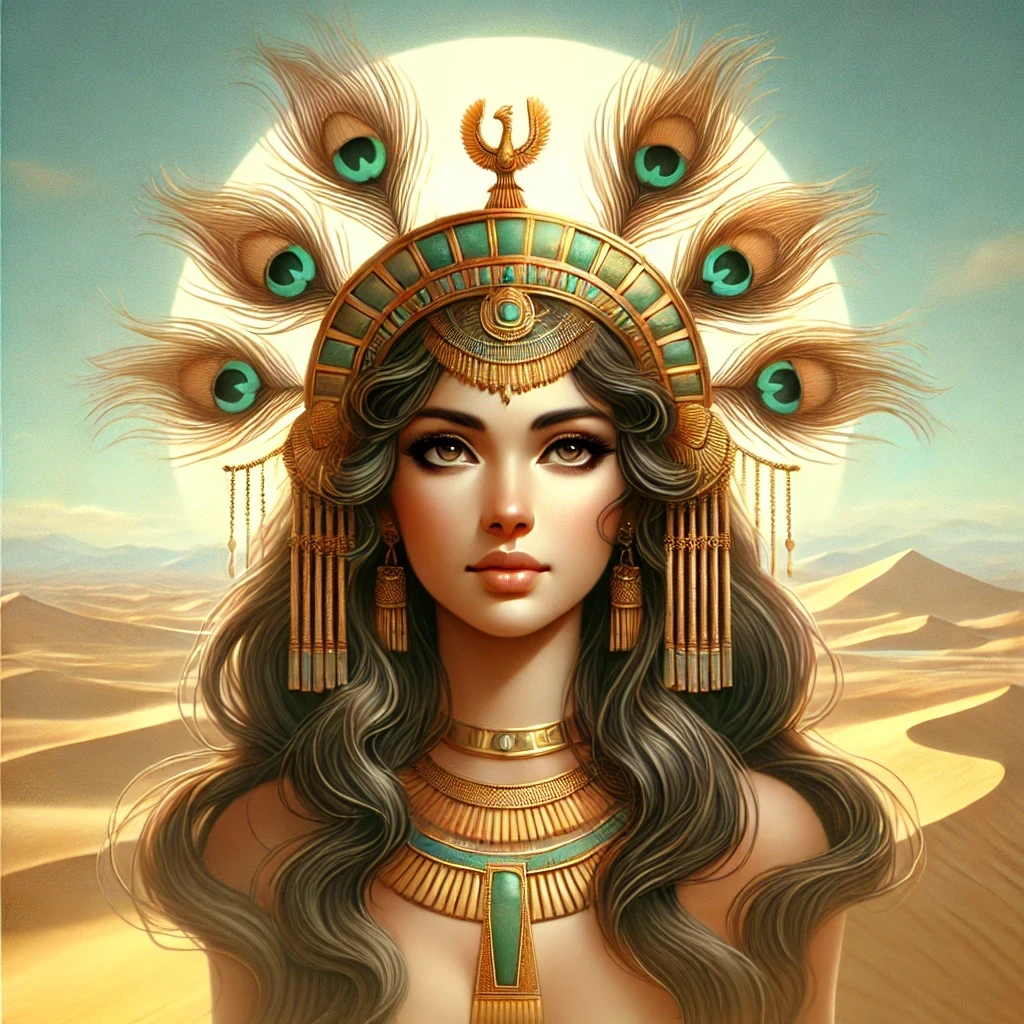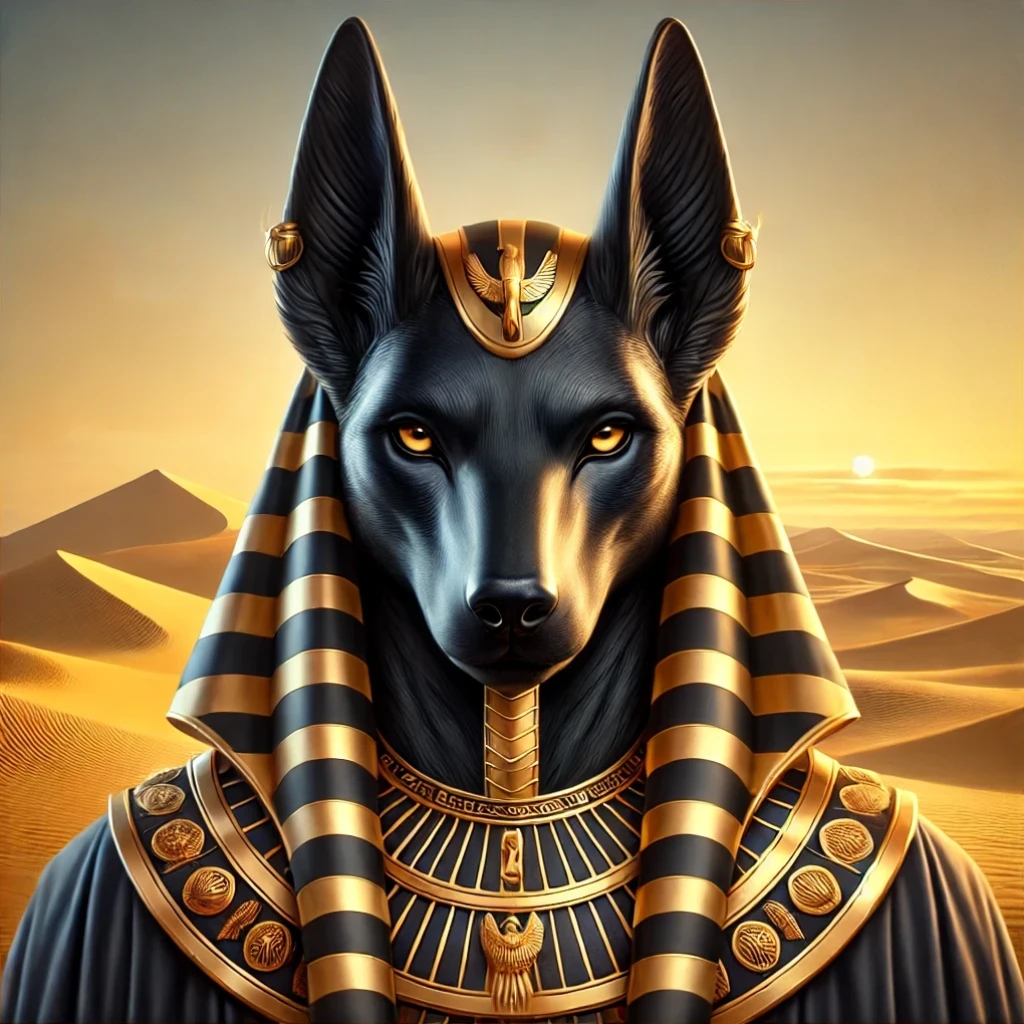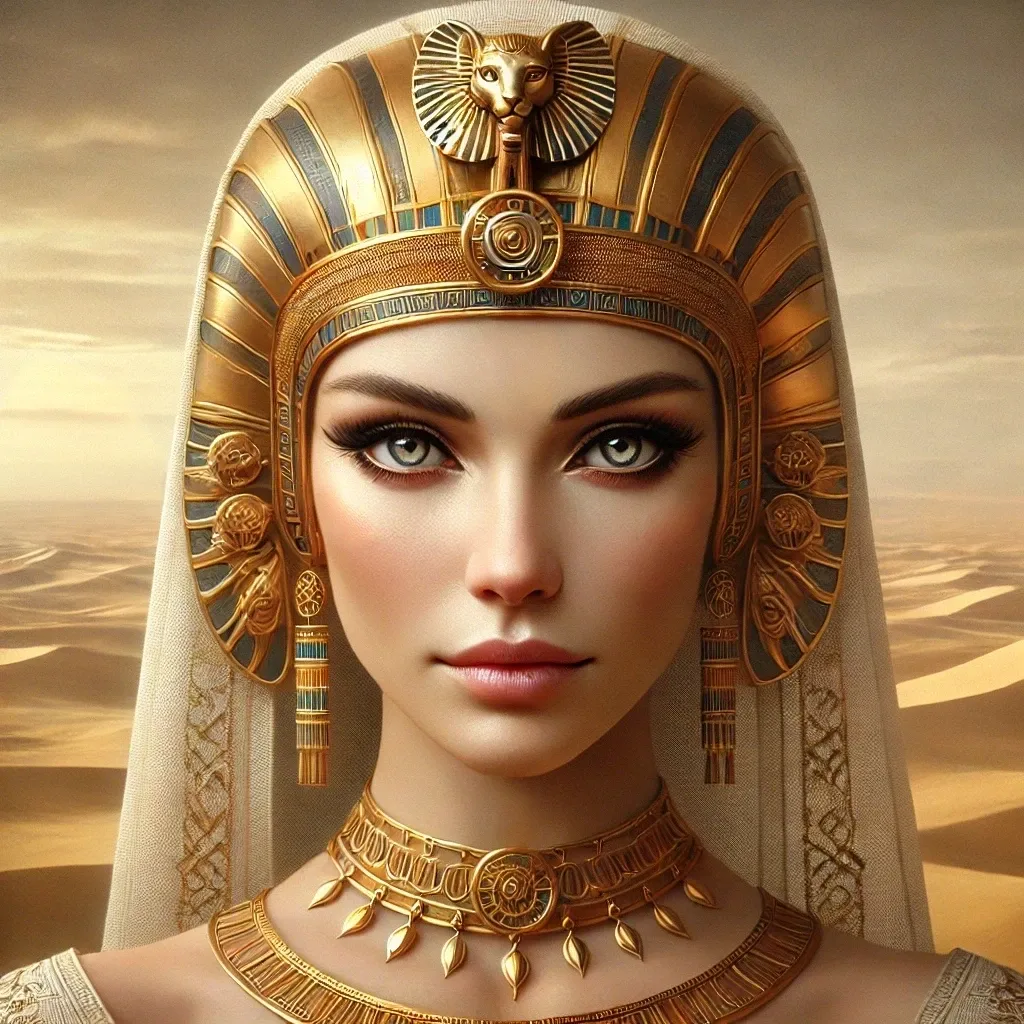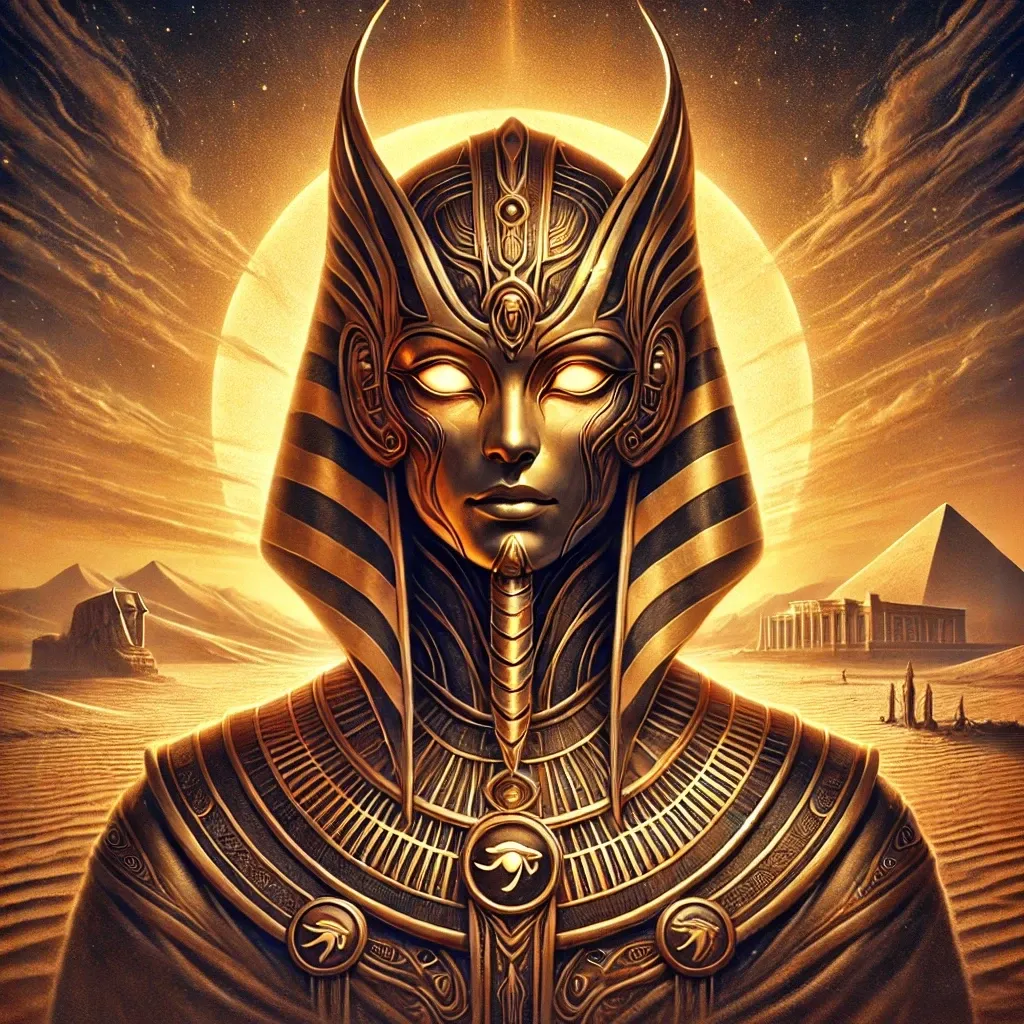Anuket, also known as Anqet, Anaka, Anket, Anoukis or Anukis, was an ancient Egyptian goddess venerated primarily in the southern regions of Egypt and Nubia. Known as the “Embracer” or “She Who Girds,” her name reflects the protective and nurturing qualities attributed to her. Anuket was closely associated with the life-giving waters of the Nile and played a key role in the rituals and mythology tied to its annual inundation. Her epithets include “Lady of the Island” and “Nourisher of the Fields,” highlighting her vital role in sustaining agriculture and life.
Origins
Historical Roots
Anuket’s worship can be traced back to the Old Kingdom, though she gained prominence during the Middle Kingdom and the New Kingdom periods. Her cult was centered in the southern frontier region of Egypt, particularly around the First Cataract and the island of Elephantine, near modern-day Aswan. This area marked the boundary between Egypt and Nubia, and her role as a protector of this region emphasized her importance in maintaining order and prosperity.
Connection to the Nile
The goddess was deeply tied to the Nile River, particularly its inundation. The annual flooding of the Nile was crucial for replenishing the fertile lands of Egypt, and Anuket was seen as a divine guardian of this natural cycle. Her worship often included offerings cast into the Nile—a practice believed to ensure the river’s continued bounty.
Appearance
Iconography
Anuket is most commonly depicted as a graceful woman crowned with a headdress of reeds and ostrich feathers. This distinctive crown symbolizes her connection to the fertile banks of the Nile and the life it sustains.
Artistic Representations
In statues and carvings, she is often shown holding a scepter and the ankh, symbols of power and life. Occasionally, she appears with a gazelle, an animal sacred to her, reinforcing her ties to fertility and the natural world.
Abilities
Powers of Nourishment
Anuket was revered for her ability to provide nourishment and abundance. Her influence extended to ensuring the Nile’s annual inundation, which fertilized the land and secured bountiful harvests for the people of Egypt.
Protective Role
As a guardian deity, she was believed to protect travelers along the Nile. Her protective powers were invoked to ensure safe journeys, particularly in the treacherous cataract regions.
Myths
A Tale of the Nile’s Blessing
One of the most enduring legends surrounding Anuket involves her role in blessing the Nile waters. During the Opet Festival, her statues were paraded through temples, symbolizing her active involvement in sustaining life through the river’s flow.
Connection with Khnum and Satis
In Egyptian mythology, Anuket formed a triad with Khnum, the ram-headed creator god, and Satis, the goddess of the Nile’s flood. Together, they orchestrated the annual flooding, with Anuket ensuring the river’s bounty reached all corners of the land.
Symbolism
Representing Fertility
Anuket’s primary symbolism lies in her association with fertility and prosperity. Her headdress of reeds and feathers underscores her connection to the Nile’s lush vegetation.
Sacred Animals
The gazelle, frequently linked to her worship, embodies grace, swiftness, and abundance. In rituals, offerings of gazelle-shaped ornaments were common.
Associated Plants and Objects
Papyrus, reeds, and water lilies are often connected to her, further highlighting her ties to the river and its life-giving properties.
Relationships
The Triad of Elephantine
Anuket’s most significant relationships are with Khnum and Satis, forming the Elephantine Triad. Khnum shaped humans on his potter’s wheel, Satis controlled the inundation, and Anuket distributed the waters, completing the divine cycle of creation and sustenance.
Connections Beyond the Triad
While primarily linked to the Nile’s cycles, her influence extended to interactions with other deities. She shared thematic connections with Hathor, another goddess associated with fertility and nurturing.
Trivia
- Anuket was sometimes worshipped in Nubia, highlighting her cross-cultural significance.
- During the New Kingdom, offerings of gold and jewelry were made to her temples, emphasizing her role in ensuring prosperity.
- Her temples often contained inscriptions detailing prayers for a plentiful inundation, illustrating her pivotal role in daily life.
- In some depictions, her headdress includes a feathered crown resembling that of Maat, linking her to cosmic order.
- She was honored with elaborate ceremonies during the “Festival of the Nile” in Elephantine.



